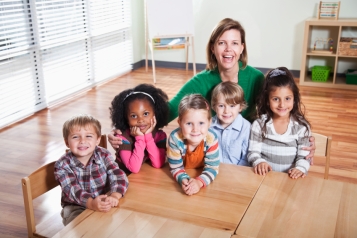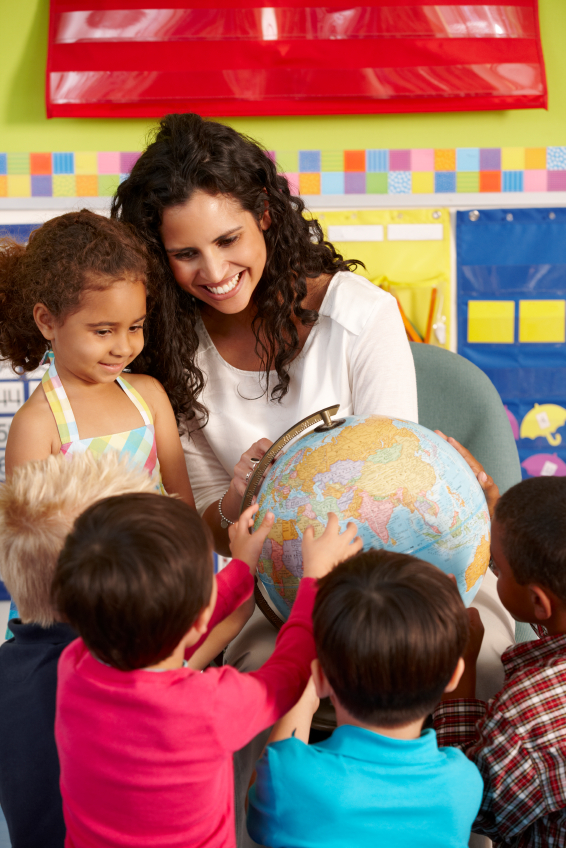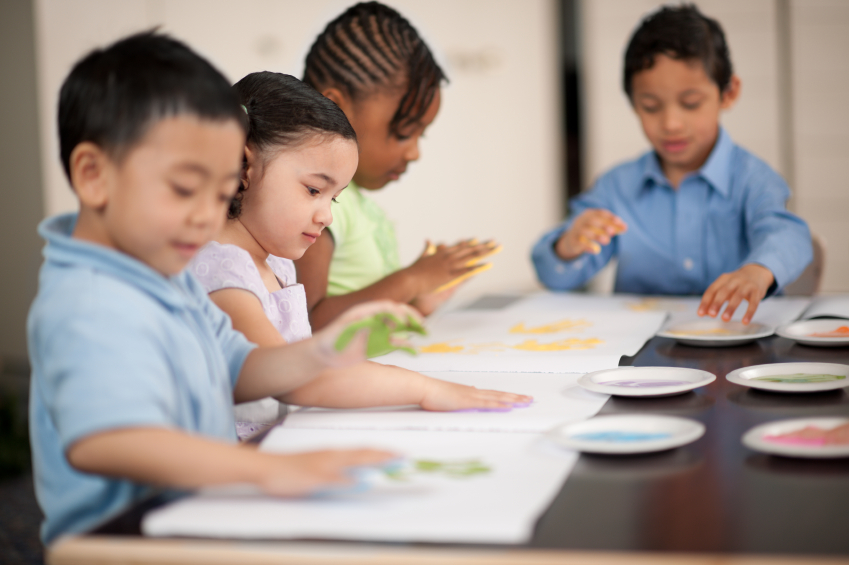 The days are rapidly disappearing when all the children in a child care setting share the same culture and language. Families often move from one part of the country to another or from one country to another to find work. Other families move to new places to find a safer environment, to participate in educational opportunities, or for other reasons. When children enter child care or educational settings in their new communities, they can face many challenges:
The days are rapidly disappearing when all the children in a child care setting share the same culture and language. Families often move from one part of the country to another or from one country to another to find work. Other families move to new places to find a safer environment, to participate in educational opportunities, or for other reasons. When children enter child care or educational settings in their new communities, they can face many challenges:
Dialects: Even children moving within the same country can discover that their dialects make them stand out as different from the other children. A child from Appalachia and a child from Maine may pronounce many words differently and use different local idioms. Children who have learned English before moving to this country may use a more British form of English or may use phrases and pronunciations unique to their home country.
Languages: Many children arrive in this country knowing no English at all. Younger children may still be learning their home languages.
Culture: Children moving from one location to another often find that manners, expectations, foods, religious practices, music, and even facial expressions and gestures are different from what they are used to.
Child care providers and early childhood teachers are some of the most caring people in the world. We all want what is best for the children in our care and none of us would intentionally hurt a child. But many times providers are uncertain how to work with children whose cultural background and languages are different from their own. While this is a big topic, here a few basic principles that can help:
Respect: When we treat children and their families with respect, they are usually very forgiving of any accidental mistakes we may make along the way. When other children in the group see your respectful attitude, they are also more likely to be respectful to children whose culture may not be the same as their own.
Communication: Communication involves both listening and talking. Listening to the children’s families can greatly enhance your understanding of the child’s culture. For example, you may have noticed that a child does not eat a certain food. The family may be able to explain that this food is forbidden by their religion or something that is never served in their original home.
English Language Learners: While it is helpful for all children to learn English, it is not helpful to forbid them from using their home language. If you have children who speak languages other than English, look at it as an opportunity for two-way learning. Encourage them to teach you words from their language as you teach them new words in English. Use many pictures, manipulatives, and other visual aids as you present information. This will actually help all of the children in your group.
Openness: While there may be some aspects of your daily routine or curriculum that are not open to change, there are probably many things that can be flexible. For example, you may be accustomed to having the children use your first name. In many cultures this is considered disrespectful. You can be open to letting them address you in ways that feel right and comfortable to them. Along the same line, in some parts of the country children are taught to address adults using the terms “ma’am” and “sir.” While this may be different from what you are accustomed to, making the children stop or teasing them about this is not helpful.
Integrating Different Cultures: As you set up your learning environment, look for ways to reflect the culture of each child in the room. The children’s families can be a rich resource. They may be able to share or suggest cooking implements that are used to prepare foods within their cultures. You can include these in your dramatic play area. You can choose children’s literature and music that reflects different cultures in a respectful way. In the construction area, you may want to display pictures of buildings from places where the children have previously lived. For example, you may be teaching in a rural area, but have children who have recently lived in large cities. On the other hand, you may teach in a city and have children who have recently lived where most of the homes were small adobe structures. Seeing pictures of buildings that are not common where you live may open up discussions about different types of buildings. While it usually works best to begin by focusing on the cultures of the children in the group, as time progresses you can bring in materials to expose the children to even more places and the cultures of the people who live there.
 Emphasize Similarities: Sometimes in trying to promote multiculturalism, we can go too far in emphasizing the differences among people of different cultures. While no two people are the same, as humans we are more alike than different. If we over-accentuate the differences, we can accidentally cause children to view other cultures as somehow unnatural or unconnected to them. It is important to help children understand that people from all cultures have much in common.
Emphasize Similarities: Sometimes in trying to promote multiculturalism, we can go too far in emphasizing the differences among people of different cultures. While no two people are the same, as humans we are more alike than different. If we over-accentuate the differences, we can accidentally cause children to view other cultures as somehow unnatural or unconnected to them. It is important to help children understand that people from all cultures have much in common.
Would you like to learn more?
Back to blog listing